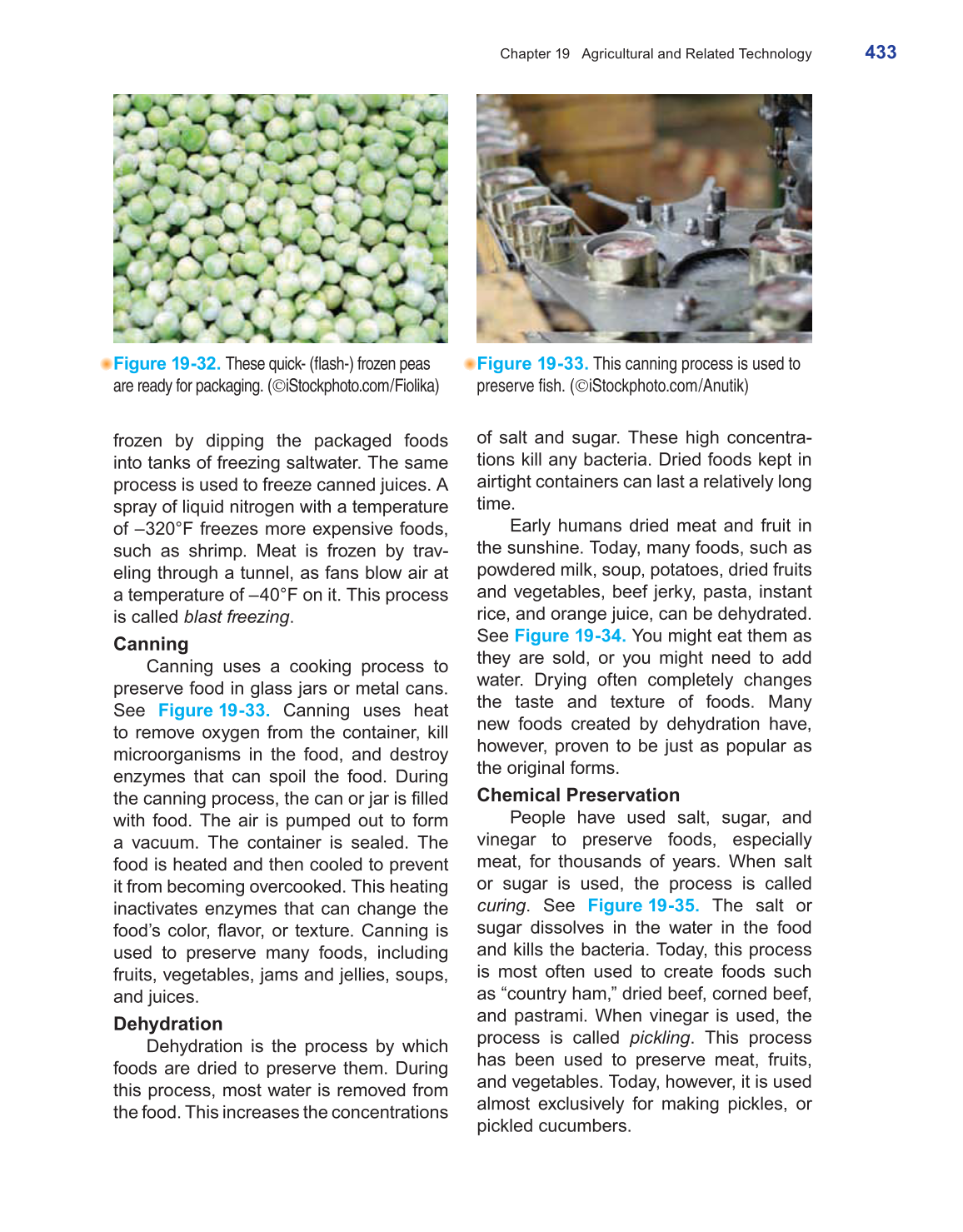Chapter 19 Agricultural and Related Technology
433
frozen by dipping the packaged foods
into tanks of freezing saltwater. The same
process is used to freeze canned juices. A
spray of liquid nitrogen with a temperature
of –320°F freezes more expensive foods,
such as shrimp. Meat is frozen by trav-
eling through a tunnel, as fans blow air at
a temperature of –40°F on it. This process
is called blast freezing.
Canning
Canning uses a cooking process to
preserve food in glass jars or metal cans.
See Figure 19-33. Canning uses heat
to remove oxygen from the container, kill
microorganisms in the food, and destroy
enzymes that can spoil the food. During
the canning process, the can or jar is filled
with food. The air is pumped out to form
a vacuum. The container is sealed. The
food is heated and then cooled to prevent
it from becoming overcooked. This heating
inactivates enzymes that can change the
food’s color, flavor, or texture. Canning is
used to preserve many foods, including
fruits, vegetables, jams and jellies, soups,
and juices.
Dehydration
Dehydration is the process by which
foods are dried to preserve them. During
this process, most water is removed from
the food. This increases the concentrations
of salt and sugar. These high concentra-
tions kill any bacteria. Dried foods kept in
airtight containers can last a relatively long
time.
Early humans dried meat and fruit in
the sunshine. Today, many foods, such as
powdered milk, soup, potatoes, dried fruits
and vegetables, beef jerky, pasta, instant
rice, and orange juice, can be dehydrated.
See Figure 19-34. You might eat them as
they are sold, or you might need to add
water. Drying often completely changes
the taste and texture of foods. Many
new foods created by dehydration have,
however, proven to be just as popular as
the original forms.
Chemical Preservation
People have used salt, sugar, and
vinegar to preserve foods, especially
meat, for thousands of years. When salt
or sugar is used, the process is called
curing. See Figure 19-35. The salt or
sugar dissolves in the water in the food
and kills the bacteria. Today, this process
is most often used to create foods such
as “country ham,” dried beef, corned beef,
and pastrami. When vinegar is used, the
process is called pickling. This process
has been used to preserve meat, fruits,
and vegetables. Today, however, it is used
almost exclusively for making pickles, or
pickled cucumbers.
Figure 19-32. These quick- (flash-) frozen peas
are ready for packaging. (©iStockphoto.com/Fiolika)
Figure 19-33. This canning process is used to
preserve fish. (©iStockphoto.com/Anutik)
